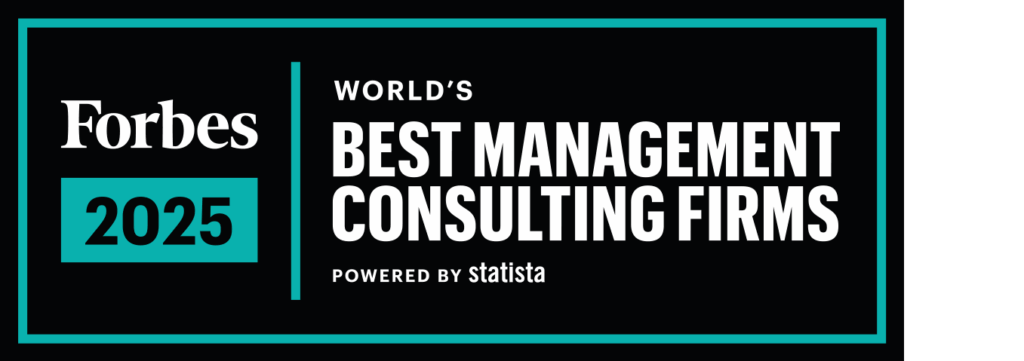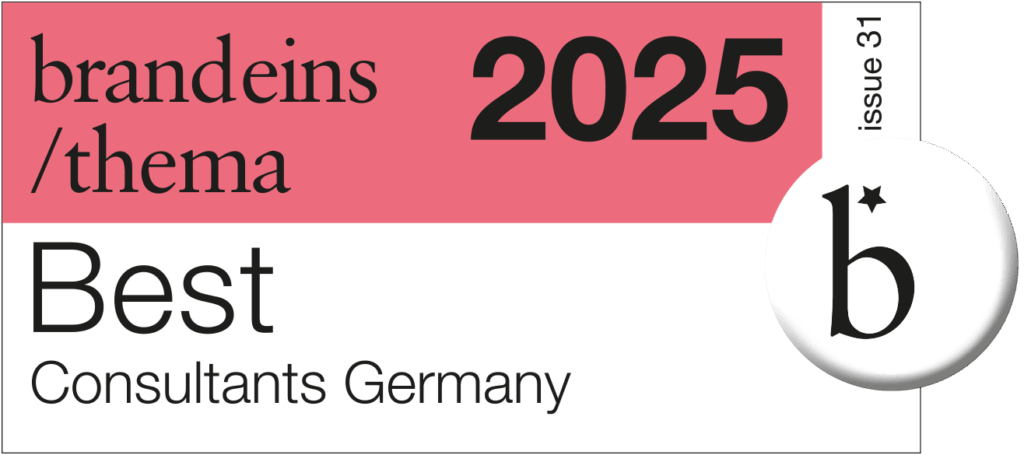Procurement: Optimizing purchasing through 6 pillars
More and more demands, less and less trust. Today's buyers are often confronted with expectations that they can no longer meet. Materials need to be procured quickly, cheaply and in high quality without causing difficulties - however, training and an appropriate number of employees are often a prerequisite for success.
No budget is planned for this, as purchasing does not generate any profits. After all, "only" something has to be ordered - it can't be that difficult. Anyone nodding in agreement here is barking up the wrong tree. Because the reality is different.


The right foundation for successful - and profitable - purchasing rests on 6 pillars:
These pillars do not stand alone, but are mutually dependent. Because of this interdependence, improvements to just one aspect are many times weaker than if all of them are upgraded. Hence this holistic approach.
Strategy
Strategies also serve to achieve objectives in purchasing. It is therefore necessary to expand purchasing to include strategic planning. The main focus here is on materials and suppliers. The well-considered bundling of orders saves costs and reduces the amount of work involved in impulse purchases. At the same time, suppliers are reorganized in order to optimally allocate the changed order processes.
Processes
Streamlining ordering processes is an essential part of process optimization. It shortens the path between demand and delivery and provides a clear overview. For example, a system is introduced that allows employees to send their orders directly to Purchasing instead of sending orders to suppliers in a disorganized manner that Purchasing has to laboriously track.
Organization
Similar to the processes, the aim is to streamline the organization. A clear distribution of tasks within the purchasing department should be emphasized here. Who can the departments contact, who orders which product groups, who has to approve orders? Clear order chains can be installed using e-procurement systems, which allow a clear presentation of all orders.
Employees
Every organizational step forward can only be achieved with appropriately capable employees. Many purchasers are constantly given new tasks, while training and the corresponding further training are often neglected. The complexity of purchasing is often overlooked and employees are not given sufficient support. Furthermore, trust, responsibility and appropriate remuneration are the foundations on which management should build. After all, motivation does not come about by itself: with personal incentives and the appropriate recognition, a purchaser will significantly increase their performance, which in turn benefits the company.
Methods/Tools
However, commitment is not everything, it must also be implemented through the right working methods. This includes both supplier and material group management. With these tools, more cost-effective ordering processes can be achieved, as volume discounts, for example, result in more advantageous conditions.
Internal processes can be improved through ABC analyses, which show the priority of goods or items, and a thorough cost structure analysis. This is because financial resources can often be saved in seemingly rigid processes that can be put to far better use.
Controlling
Purchasing controlling stands above all individual processes. By closely monitoring processes, it ensures that purchasing remains profitable and exploits any potential that arises. This includes a structured system of key figures, which weighs up all company items against each other and thus ensures a clear overview. Controlling also covers aspects such as material price development and parts of risk management. This overarching position enables Purchasing to react to market fluctuations in advance and make more flexible decisions.
SIX PILLARS, STABLE PURCHASING
Our 6-pillar approach anchors strategy, processes & co. for future-proof and high-performance purchasing.

The technical departments: Are they sacred or blind cows?
Purchasing can develop into a profit driver within a few weeks as soon as technology and purchasing really work hand in hand. However, these opportunities are not consistently exploited. Design, production and development do not take purchasing seriously as a competent partner. They speak different languages, some think commercially and others technically. For the entrepreneur, on the other hand, the technical departments are "sacred cows". If sales are to be made, the management first calls the technical and sales departments.
Technology and purchasing - how can the potential for conflict be resolved?
For engineers, purchasers are often a red rag. They fear cost savings at the expense of their own department, product quality and security of supply. In addition, the engineering department is often so busy with projects that any additional change requests are perceived as a disruption.
Purchasing wants to reduce costs. Engineering wants the largest possible budget for the best product quality. Both departments need a common goal and a common language. The common goal must be to always be one step ahead of the competition through innovation and the best price-performance ratio. Purchasing and technology must not compete with each other, they must work together constructively.
But how does good collaboration work?
On the one hand, mutual support requirements and decision-making powers must be defined. On the other hand, the roles of purchasing and technology as well as the rights and duties of the team members must also be defined. It must be clarified who supports whom, how and where, and who has what rights and obligations.
However, the prerequisite for this is that buyers and technicians speak each other's language. The technicians need a basic commercial understanding and must be involved in product group management. The buyer, on the other hand, must be able to read data sheets and technical drawings. Buyers must be able to assess functionalities, technical problems, compatibility and quality.
If the purchaser then sees himself as more than just a procurer, but also as an interface, or rather as a link between the departments, a lot has already been gained. If these prerequisites are met, a simple measure such as a joint barbecue evening can help to break down old patterns of thought and behavior so that purchasing and technology can get to know each other better and openly address any misunderstandings and conflicts. Building on this, a workshop on specific projects or components is recommended. The following key questions need to be clarified here: What would which department have wanted? Why did who decide how? Who had what basis for their decision? This helps to break down caste thinking and everyone understands each other's points of view much better.
The corporate culture and open communication are important in order to address and resolve conflicts or misunderstandings at an early stage. In addition, island knowledge must be disseminated across departments through a lively exchange.
But the buyer can do much more to gain respect.
How can purchasing gain respect?
By doing what the hidden champions do, for example: Using the supplier as a source of innovation and ideas. It is well known that it makes sense to involve suppliers in product development on an ongoing basis. But it is still done too rarely - partly out of habit, partly out of fear of opening up, partly because the relevant suppliers are missing. This is where purchasing acts as an interface to the supplier, providing ideas as a development partner and helping to speed up processes.
An example from practice
A car manufacturer decided to commission an automotive supplier to develop a cast housing instead of designing it themselves. For this purpose, the supplier was to be provided with installation space dimensions, functionalities and 3D contour data. Thanks to the close cooperation between engineering and purchasing, a suitable supplier was then selected to accomplish this task. The supplier's specialist knowledge and ongoing, open communication between development and purchasing were essential. As a result, the product became thinner-walled, lighter and cheaper and everything was completed within the specified time.
Savings potential through suppliers
Teamwork between purchasing and technology as a driver of returns and innovation
What sounds provocative for engineers at first glance turns out to be a real treasure trove for the company at second glance. It is certainly worth taking a look at the following figures: in mechanical engineering, for example, around 60 percent of costs consist of purchased materials. Technically skilled purchasers and suppliers must be involved in product development at an early stage. This involvement of purchasing and suppliers makes it possible to inform the engineering department about cost developments in good time and to correct undesirable trends. To this end, purchasing must be able to moderate and systematically manage as an interface between supplier and technology.
Purchasing must be an active driver in cost-cutting projects. But then always in close cooperation with technology. This requires support from top management, as well as regular reporting, transparency, de-escalation management and regular training.

Would you like to find out more about procurement processes or do you have other questions about KLOEPFEL Consulting?
Duet of purchasing and management:
Seven ideas that inspire managing directors
Often underestimated and yet so profitable: procurement processes hide unrecognized profits. You just need to know how to bring them to light.
Awareness of the value of purchasing is also increasing in SMEs. However, many purchasers still lack the necessary support from management to be able to exploit their full potential.
Those who expect performance should reward performance
Purchasing is not just an ordering department, but can take the reins and act independently. However, there is a considerable lack of this: while sales and marketing are still elevated as profitable departments, purchasing is usually neglected. Purchasers lack fundamental support from the management: innovative ideas are not implemented, suggestions for savings are dismissed as unimportant. Employee motivation? Not in purchasing. They are often paid a fixed basic salary rather than according to performance. Buyers with a personal incentive would take advantage of far more opportunities, negotiate harder and strive for further optimization. It is therefore advisable to give them precisely this motivation and aim for performance-based remuneration.
Focusing on strategic purchasing - using digitalization
The everyday life of a buyer is often overloaded with operational work steps. There is little time for well-thought-out planning, and people react instead of acting. Relying on tried and tested patterns is not a bad thing, but it can become a disadvantage if the market environment changes and your own methods are no longer up to date. The risk of being pushed aside by your competitor because they have recognized your potential is constantly growing. Instead of simple data processing, a strategic organization of purchasing would be much more profitable. For example, by outsourcing purchasing and logistics or establishing new types of analysis tools such as the purchasing tracker.
Observe, plan, implement - adapting your own procurement to new developments takes place both inside and outside the company and requires constant attention.
Without a plan and structure - coordination within the company
"We'll just order that ourselves, it works better". This phrase is often used by specialist departments to order goods on their own authority. Many employees tend to forget that there is actually a purchasing department responsible for this. This is because many companies have to contend with "maverick buying". Departments order at their own discretion, often resulting in unnecessary deliveries. The reason for this is the lack of acceptance of purchasing. Employees do not trust purchasers to be able to order the required products correctly. The consequences: Surplus goods, high costs due to individual orders and an excessive number of overpriced suppliers.
This problem can be solved using the principle of material group management. This involves classifying goods into different categories in order to be able to cover similar materials with as few suppliers as possible. The groups are selected by competent employees from purchasing and other departments. It is also extremely helpful to standardize products instead of designing each item from scratch, as discounts can be negotiated by purchasing large quantities of the same components.
Just-in-time rhythm
If production comes to a standstill, it costs money. It disrupts internal processes and should be avoided at all costs. But if important materials are missing, downtimes are unavoidable. It is possible to order products in large quantities and store them. However, both storage costs and the risk of the value of the goods being reduced due to damage or price fluctuations are against this. The company's financial liquidity is also burdened when large delivery quantities have to be paid for.
Delivering goods according to the just-in-time principle provides a remedy. This means that goods are delivered at regular intervals and always in the exact quantities required. As a result, the company does not come to a standstill and at the same time eliminates the risks of storage. However, the supplier also has to coordinate its inventory and necessarily needs a fixed order rhythm to ensure constant delivery dates. As a result, the purchasing department must set clear deadlines for when departmental orders will be accepted and processed in order to arrive with the next scheduled delivery. This does not apply to orders for special items that may be required at short notice.
Optimize existing contracts
Established companies in particular have supplier contracts that have often been in place for a long time. They were drawn up on the best terms at the time and have been fair to all parties. But over time, both external and internal factors change. The conditions that were previously favorable are now no longer acceptable for the company. So if the supplier strictly adheres to the agreed purchase quantities and prices, there is no happy ending to this business relationship.
Contracts are due to be renegotiated: The prices of goods must be adjusted to the market level and superfluous costs at the supplier may have to be cut. Purchase quantities are made more flexible and aligned with the buyer's requirements in order to compensate for order fluctuations. Experience has shown that if buyers approach suppliers with these requests, around half of them will comply. The rest will either negotiate compromises or refuse any negotiations. This means that new contracts can be concluded with three quarters of suppliers.
Single or multi sourcing?
It is of course extremely practical if all the goods you need can be ordered from one supplier. But this also creates a relationship of dependency. If a company relies on one supplier and even aligns its production with them, it puts itself in an unfavorable position. A supply bottleneck leads to downtimes, and the company has little leverage to counter a price increase. If the supplier changes the design or quality of its products, the buyer also has to adapt.
The situation is different if several suppliers are available due to product standardization. If one supplier drops out, this can be compensated for quickly and easily. Although multi-sourcing is more complicated to coordinate, it is worthwhile. Due to the existing competition, suppliers will be prepared to offer better conditions and make them more flexible. The bundled allocation of orders is equally helpful, whereby all similar goods are covered by one or two suppliers. This allows maximum volume discounts to be achieved for the same purchasing volume.
Not Made in Germany
Have you ever thought about whether foreign suppliers could be worthwhile for you? Many entrepreneurs will already be saying no. Poor quality, long delivery times and high shipping costs. Then there are the problems with language barriers and foreign customs. The costs do not seem to outweigh the benefits.
In reality, however, global sourcing certainly has potential. Suppliers from Eastern Europe or Asia may be a long way away, but their quality is getting closer and closer to the Western European standard, while the price remains low. Supply chains are becoming increasingly stable and faster, and communication is better than it used to be thanks to English as a global language. Although low delivery quantities are not yet profitable, larger orders are definitely worthwhile. A company needs two essential prerequisites for this: Firstly, strategically planned merchandise management so that orders can be placed a long time in advance. This allows fluctuations in delivery times to be absorbed. Secondly, the ability to store larger quantities of goods and thus secure volume discounts and bundled shipping costs.
Outlook
There are therefore numerous opportunities to realize savings in purchasing. The prerequisite for this is the willingness to make major changes. Transitional solutions and half-hearted attempts will produce just as many improvements. In order to achieve clear gains, you need competent personnel and specialist knowledge. Many purchasers can offer this, but are restricted in their scope by the management and cannot apply their knowledge. In other situations, the relevant employees simply lack the necessary knowledge to recognize the weak points in their company. In such cases, external support is often the only option, be it from specialized consulting firms or advice from the business environment. In some cases, even looking at competitors can reveal new opportunities. Whichever way it is approached: It is worth taking a look at procurement.






